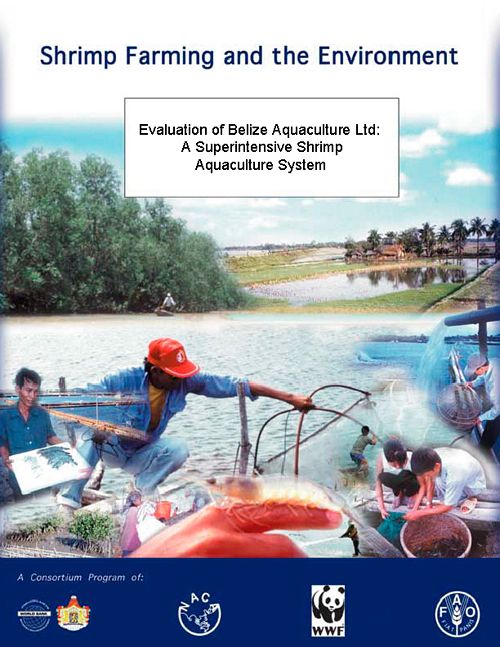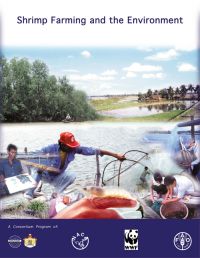Evaluation of Belize Aquaculture Ltd: A superintensive shrimp aquaculture systesm
1 June 2005 | Claude E. Boyd and Jason Clay | 2832 Downloads | .pdf | 750.6 KB | Better management practices, Nutrition and feeding, Shrimp, Environment and Sustainability, Water quality
Belize Aquaculture, Ltd., has developed a superintensive shrimp aquaculture system operating in lined ponds with heavy mechanical aeration and water recirculation (Mcintosh 1999; Mcintosh et al. 1999). The pilot study of the operation has been in progress for two years, and several different trials have been conducted in ponds of 0.065 to 1.6 ha in size. Shrimp production has ranged from less than 8,000 kg/ha to more than 20,000 kg/ha per crop.
Such high production per unit area without water exchange presents several advantages over conventional shrimp aquaculture. These include greater potential for mechanization, reduced use of land and water, fewer logistical problems in pond operations, and less effluent. If this system works as efficiently as the early data suggest, and if it is suitable for general adoption by shrimp farmers around the world, it could provide a more environmentally responsible method of shrimp production.
Because the Belize Aquaculture, Ltd., production system appears to address a number of the environmental impacts of traditional shrimp aquaculture systems, a case study of this unique system was conducted. The case study was also intended to evaluate the potential of the system for replication throughout the world. The specific objectives of the case study were to:
- Describe the production system.
- Present a summary of its performance.
- Discuss the unique aspects of the system.
- Compare the system with conventional shrimp production systems.
- Identify potential areas of concern with the current Belize Aquaculture system.
- Discuss the implications of expanding the current system in Belize.
- Assess the socioeconomic factors and effects of shrimp culture by this method.
Copyright, all rights reserved.

